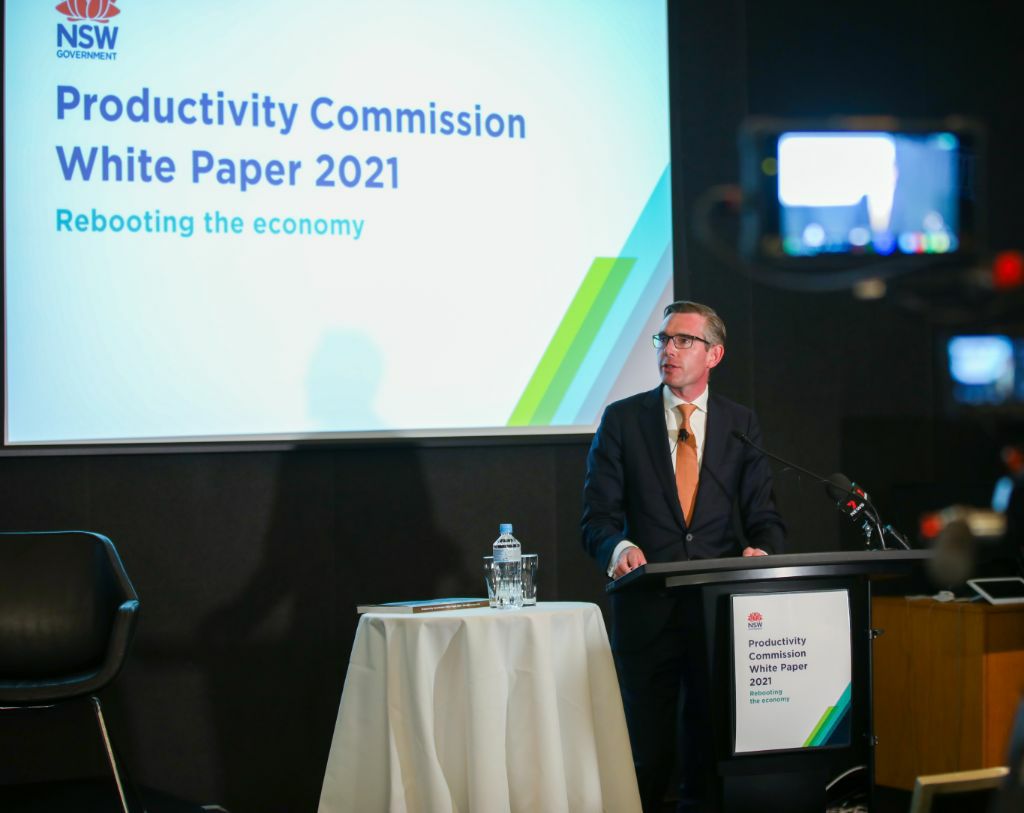Local councils say the market, not the planning system, is to blame for a shortage of housing following the release of the NSW Productivity Commission’s White Paper.

The report, launched by NSW Treasurer Dominic Perrottet last week after a three-year review, outlines a reform agenda for the state focused on housing, infrastructure, innovation and talent.
The paper says housing supply has failed to keep up with demand and lays the blame in part on what it says are overly prescriptive and complex planning regulations.
“Strict constraints on the location, nature and density of housing are limiting choice and leaving people with less income to spend on other goods and services,” the report says.
‘Prescriptive and inflexible’ rules
Productivity Commissioner Peter Achterstraat found that regulations on apartment design and car parking are adding to the cost of housing while a lengthy DA process is restricting supply and reducing affordability.
He says “prescriptive and inflexible” land use rules for business are stifling innovation and infrastructure contribtions are perceived as opaque and inefficient.
The report highlights the increasing need for more open green space accommodate the growing population, connect communities and make cities resilient to climate change.
Key planning and housing recommendations include:
- review apartment design regulations
- bring long assessment times in line with best practice
- develop long-term housing targets
- incorporate benefits of open green space into land use planning
- replace stamp duty with a broad-based land tax
Market, not planning to blame
LGNSW says the proposed changes to the planning system would deliver benefits to developers but weaken council controls and community confidence.

“Unfortunately, the Productively Commission report falls into old rhetoric around planning and housing issues that unfairly lays the blame at the feet of councils,” president Linda Scott said.
“The planning system does not deliver housing – markets do. The housing market and its cycles are what determines actual housing delivery.
“Across NSW, councils have plenty of land already zoned for housing, but councils cannot control the decisions of developers and landowners to build and release homes for sale.”
But developers say the White Paper should be a wake up call for the NSW government.
“At present, supply is not matching demand, despite demand being low because of the pause in migration,” Urban Taskforce CEO Tom Forrest said.
“Councils are not being held to account.”
LGNSW has welcomed other measures tin the paper including a call for a long-term plan for water security, improvements to infrastructure and trade qualifications, and a recommendation to link the rate peg to council growth.

The White Paper also recommends :
- creating a Teaching Centre of Excellence to improve teaching quality
- introducing new pathways to trades qualifications for HSC-holders and mature aged workers
- changing regulations to encourage the use emerging technologies like drones and e-bikes
- encourageing the use of recycled water for drinking
- lifting the ban on nuclear electricity generation for small modular reactors
- improving land use regulation for gas
- replacing motor vehicle duty for eligible electric vehicles with a road user charge
- leveraging Opal fares as an incentive to use public transport





There’s plenty of land in regional towns and villages just lying idle. A lot of it is already subdivided for use as housing estates but no one knows about it as it remains privately owned and much of it is still used for farming – what a waste. The reason nothing is happening with development land here, is because the government closed down the passenger rail services on the Tottenham Branch Line back in 1974. When that happened the town went backwards: people left in droves, businesses closed, the bank shut and a town of around 600 people back then, can now only boast a couple of hundred residents now. But what if the government reversed that 1974 decision and reinstated that passenger train service? After all, the basic infrastructure is still in tact in that town – the hospital is still there, the school is still open and it still has a supermarket, pub and two clubs – all still operating. And Tottenham is just one of five towns along the Bogan Way that suffered terribly when it lost its public transport – Albert, Tullamore, Trundle and Bogan Gate all suffered similar fates. But the long term damage to those communities can be undone by simply opening up new housing estates in those towns, reinstating the rail passenger services and allowing people to commute to work at the new Special Activation Centre at Parkes and the new mines and processing plants at nearby Fifield. Doesn’t it make more sense to reinstate services to towns like these that already have the basic infrastructure on tap and to open up the land to more residential housing than to try and cram more people into an already over-crowded, chaotic city and expect them to be happy with a tiny patch of “green space” squeezed in between an ugly forest of towering unit blocks?